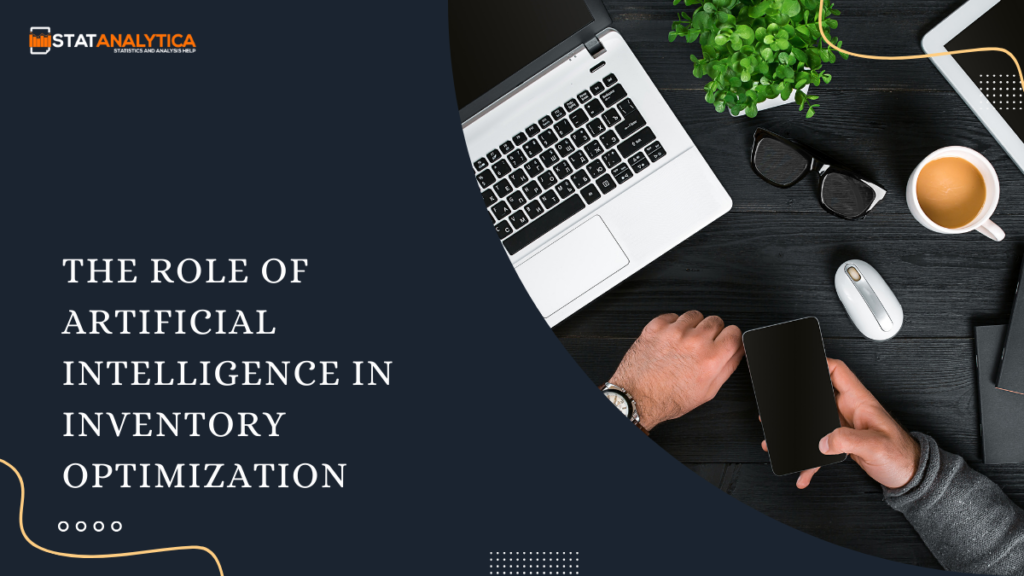In today’s fast-paced and highly competitive business landscape, effective inventory optimization plays a critical role in the success of organizations, particularly in the retail and e-commerce sectors. Traditional inventory management methods often fall short of meeting consumer expectations for accurate and available inventory. However, with the advent of machine learning and artificial intelligence (AI), businesses now have powerful tools to revolutionize inventory optimization processes. In this article, we will explore the multifaceted role of machine learning in inventory optimization, its benefits, and how it can help businesses meet consumer demands more effectively.
Understanding Machine Learning in Inventory Optimization
Table of Contents
Machine learning, a subset of AI, is a field of computer science that focuses on developing algorithms capable of learning from and making predictions or decisions based on data. When applied to inventory optimization, machine learning algorithms can analyze vast amounts of historical sales data, market trends, and other relevant factors to generate accurate demand forecasts and make informed decisions on inventory levels. Unlike traditional demand forecasting methods, which often rely on manual input and analysis, software like inventory optimization software can uncover complex patterns and trends in data that humans may overlook.
Machine learning models can identify seasonality, fluctuations, and other factors that affect product demand by processing and learning from large datasets. This proactive approach helps businesses optimize inventory levels, prevent stockouts, and reduce holding costs.
The Benefits of Machine Learning in Inventory Optimization
Integrating machine learning in inventory optimization brings numerous benefits to businesses, enabling them to meet consumer expectations and streamline their operations. Let’s delve into some of these benefits:
Accurate Demand Forecasting
Accurate demand forecasting is essential for maintaining optimal inventory levels and meeting customer needs. To generate accurate demand forecasts, machine learning algorithms can analyze historical sales data, market trends, and external factors such as social media sentiment analysis and competitor pricing. By considering these factors, businesses can adjust their inventory levels and strategies to meet changing market conditions more effectively.
Machine learning algorithms can also incorporate additional data sources, such as macroeconomic indicators and weather forecasts, to enhance demand forecasting accuracy. By analyzing these factors, businesses can anticipate changes in demand and adjust their inventory levels accordingly, minimizing the risk of stockouts or overstock situations.
Efficient Inventory Replenishment
Machine learning-powered inventory management systems excel in optimizing the replenishment process. Machine learning algorithms can automatically generate optimal replenishment orders by considering various factors such as lead time, supplier reliability, demand patterns, and storage capacity. These systems can adjust reorder points and quantities dynamically, ensuring that inventory levels are maintained at optimal levels while minimizing carrying costs and stockouts.
Furthermore, machine learning algorithms can analyze supplier performance data, such as delivery times, quality metrics, and pricing, to identify the most reliable and cost-effective suppliers. Automating the selection and evaluation of suppliers empowers businesses to streamline procurement processes, drive cost efficiencies, and maintain a consistent and reliable inventory supply.
Inventory Optimization and Classification
Managing diverse product portfolios can be challenging, particularly when dealing with thousands or millions of stock-keeping units (SKUs). Machine learning algorithms can classify and segment products based on various attributes, such as demand patterns, profitability, and seasonality. This categorization allows businesses to strategically prioritize their inventory management efforts, focusing on high-value or fast-moving products.
Additionally, machine learning-driven optimization techniques help determine optimal safety stock levels for each product, considering factors such as demand variability, lead time, and desired service levels. By analyzing historical sales data and market trends, machine learning algorithms can identify potential product substitutes or complementary items, enabling businesses to make data-driven decisions on product assortment and cross-selling opportunities.
Real-Time Tracking and Visibility
Machine learning-enabled inventory management systems provide real-time tracking and visibility across the entire supply chain. Advanced technologies such as radio frequency identification (RFID), Internet of Things (IoT) sensors, and barcode scanning capture and transmit data instantaneously, providing accurate information about inventory levels, locations, and conditions.
This visibility helps reduce stockouts, improve order fulfillment rates, and enable efficient warehouse operations. Machine learning algorithms can analyze this real-time data to identify bottlenecks, inefficiencies, or anomalies, allowing businesses to take proactive measures to mitigate risks and streamline operations.
For example, machine learning models can detect potential disruptions in the supply chain, such as delays in shipments or production issues, and trigger automated alerts or re-routing strategies to minimize the impact on inventory availability.
Predictive Maintenance and Quality Control
Machine learning algorithms can analyze sensor data from manufacturing equipment and storage facilities to predict maintenance needs and detect quality issues. By identifying potential equipment failures or product defects in advance, businesses can proactively schedule maintenance, reduce downtime, and avoid costly production delays.
Predictive maintenance can also optimize spare parts inventory by predicting failure probabilities and ensuring the availability of necessary components. Machine learning can also enhance quality control processes by analyzing data from inspections, tests, and customer feedback. Through image recognition, machine vision, and natural language processing, machine learning models can detect quality issues and deviations from expected standards. By automating quality control processes, businesses can effectively mitigate human error, enhance overall accuracy, and significantly minimize the probability of defective products reaching customers.
Also Read: Top 200 Research Topics In Education Pdf – Free Download
The Future of Machine Learning in Inventory Optimization
As machine learning continues to evolve, we can expect even more sophisticated inventory optimization solutions, enabling businesses to stay ahead in an increasingly competitive marketplace.
The integration of machine learning with other emerging technologies, such as blockchain and the Internet of Things (IoT), holds great potential for improving inventory management processes further. Machine learning algorithms can leverage blockchain technology to enable transparent and secure tracking of supply chain transactions, ensuring the authenticity and integrity of inventory data. The integration with IoT devices can provide real-time data on inventory levels, conditions, and location, enabling businesses to make more informed decisions and respond swiftly to changes in demand.
Furthermore, advancements in machine learning algorithms and computational power will allow for more accurate and complex demand forecasting models. These models will be capable of analyzing vast amounts of data in real-time, incorporating factors such as social media trends, economic indicators, and even geopolitical events to generate accurate demand forecasts. With these advancements, businesses will be better equipped to optimize their inventory levels, reduce costs, and improve customer satisfaction. In conclusion, machine learning is transforming the way businesses optimize their inventory.
By leveraging the power of machine learning algorithms for demand forecasting, replenishment, optimization, real-time tracking, and quality control, organizations can achieve significant improvements in operational efficiency, cost savings, and customer satisfaction. As machine learning continues to advance, businesses that embrace this technology will have a competitive edge in the evolving landscape of inventory optimization.

